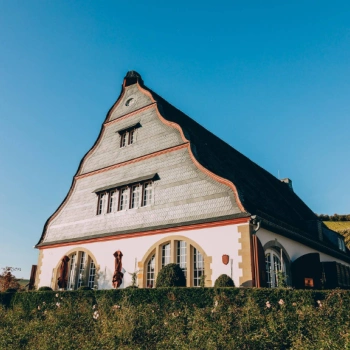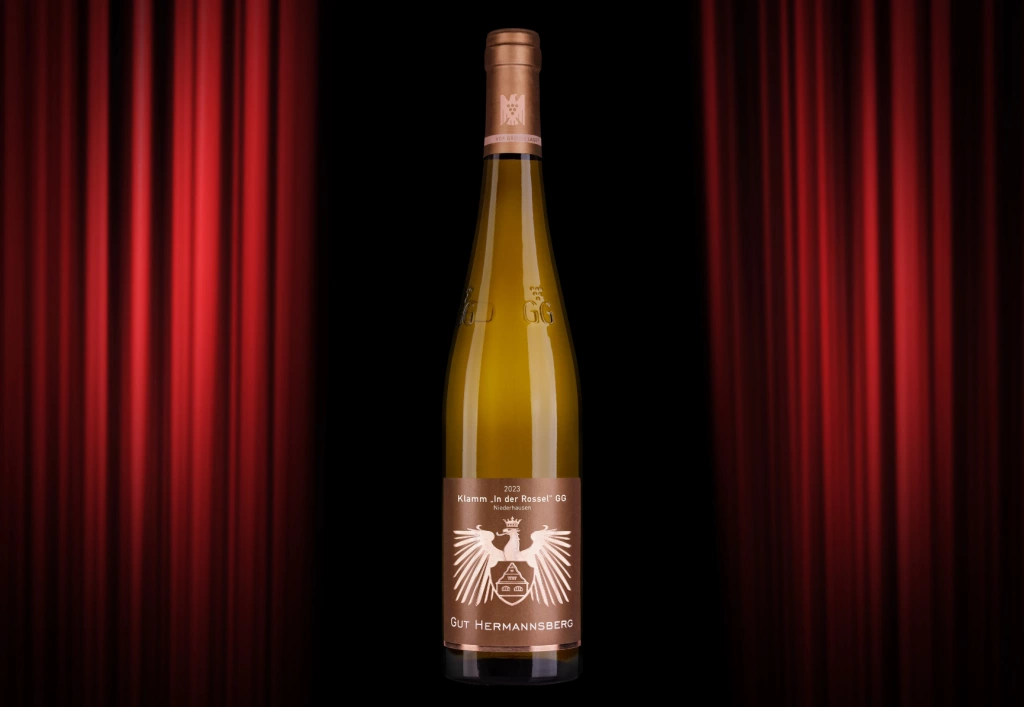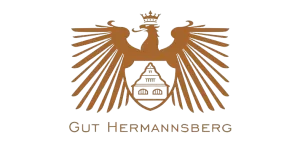
Klamm ‘In der Rossel’ takes to the stage

After 14 years of painstakingly revitalising of one of the steepest vineyards in the Middle Nahe, a very special wine is finally making its grand entrance. Gut Hermannsberg is launching its seventh VDP Grosses Gewächs with 2023 KLAMM ‘IN DER ROSSEL’ RIESLING VDP GG. This means that all seven of the winery's great sites are now crowned with a VDP.GROSSES GEWÄCHS® – a classification marker of the finest wines from Germany’s top sites.
In 2009, the Reidel family acquired the former Royal Prussian domain, renamed it ‘Gut Hermannsberg’ and dared to make a new start. They had a clear vision: to return the once prestigious domain to the top of the German Riesling wine estates. The conditions could not have been better, as every single plot of land belonging to the estate was classified as a VDP.GROSSES GEWÄCHS® (the equivalent of Grand Cru) by the VDP. Together with production manager Karsten Peter, the Reidel family began extensive renovation work in all the vineyards to gradually restore the soils and vines to the top quality expected from such highly classified sites.
The fundamental reasoning was no matter how long it takes, a wine will only be released onto the market as a VDP.GROSSES GEWÄCHS® when it passes the strict internal quality and maturity standards. It took 14 years for the last of the seven vineyards to meet these high standards.

The long road to perfection
Even though the majority of the Klamm ‘In der Rossel’ vineyard was in a neglected state when the estate took over, its potential was clearly evident. The site is perfectly exposed to the sun, the soils have a unique combination of volcanic porphyry and slate rock, and when you open one of the rare bottles from the old stock, you are rendered nearly speechless by the vitality in the glass.

While the upper, terraced part of the site, with vines that are around 60 years old, was in good condition in 2009, the lower section, which covers a good two thirds of the 0.85 hectares, had to be completely replanted. To achieve the best possible vine genetics, a selection was made from the oldest vineyards of Gut Hermannsberg. It took years for the vines to gain a foothold on the poor volcanic soils with little fine topsoil.

“We worked hard to get the vineyard in balance.”
For Karsten Peter, balance means that the vineyard largely regulates itself and the winegrower has to intervene as little as possible. Vegetative growth and yield are then in good proportion to each other –a tricky matter with different vine ages and an inhomogeneous soil structure (volcanic porphyry interspersed with a vein of slate rock). In order to achieve the desired balance, intensive work was carried out with compost and straw cover and various cover crops were trialled. In addition, the younger vines had to be given sufficient time until their youthful charm harmonised with the depth of the now 60-year-old vines from the higher plots.
The old and new parts of the vineyard were harvested and vinified separately for several years. The last vintages have already shown very positive development. The result always had power and tension, but in the end the winemaker Karsten Peter believed the ‘third dimension’, as he calls it, was lacking. A few more years passed, and in 2023 the time had finally come – Klamm ‘In der Rossel’ had achieved this ‘third dimension’, possessing the desired depth and complexity.
Vinification
The grapes for Klamm ‘In der Rossel’ 2023 were harvested by hand in two stages. The upper, terraced parcels were harvested four days before the younger, lower section. The vinification is based on the same philosophy as the other GGs from Gut Hermannsberg: to bring maximum vineyard character into the bottle. The grapes were selected and crushed twice. A short maceration period of six hours was followed by gentle pressing with a short settling period overnight. Like all GGs, the wine was spontaneously fermented and matured for a long period on the lees, partly in stainless steel and partly in large wooden barrels. The wine was bottled without fining on 30 July 2024 and is now being released on the market.
The result is a multi-layered, elegant and mineral Riesling that surprises with unexpected charm.
In this year's VDP.GROSSES GEWÄCHS® Vorpremiere (sneak preview) tasting in Wiesbaden, Gut Hermannsberg is presenting for the first time seven wines that have been matured for different periods of time (depending on soil and other conditions) before they are released on the market:
First presentation 2024 | Released after |
2023 Klamm ‘In der Rossel‘ GG | 12 months |
2023 Felsenberg GG | 12 months |
2023 Steinberg GG | 12 months |
2023 Rotenberg GG | 12 months |
2022 Bastei GG | 2 years |
2019 Kupfergrube GG | 5 years |
2019 Hermannsberg GG | 5 years |
Profile of Klamm ‘In der Rossel’
‘In der Rossel’ is one of the steepest sites in the Middle Nahe valley, with slopes of up to 80 percent. Some of the slopes are cross-terraced, with walls and very stony, porous soils. Just above is an old quarry. The south and south-east facing site warms up quickly during the day and then cools down noticeably at night. Riesling loves this contrast. The soil is characterised by a particular complexity, with elements that are not normally found together. These are due to very active volcanic earth movements which have resulted in a mix of carbon slate and volcanic porphyry in one place.
Size: 0.85 ha
Gut Hermannsberg estate share: 0.85 ha (Monopole)
Soil: Volcanic rhyolite, carbon slate, Lemberg porphyry rock
Altitude: 140-180m above sea level
Exposure: south - south-east
Slope gradient: up to 80%
Vine age: up to 60 years
Stone content: 66%
First vintage 1957 – first vintage as Gut Hermannsberg in 2023
Downloads





The original “Royal Prussian Winegrowing Domaine” was founded in 1902 as a state-run model winery for Riesling. It is notable for its picturesque location above the Nahe River (90 minutes southwest of Frankfurt am Main). Every one of the storied estate’s 30 hectares of vineyard has been classified by the VDP as a GROSSE LAGE. Depending on the soil conditions, the now seven GGs are matured for different periods of time before they are released on the market.
Gut Hermannsberg
Vormals Königlich-Preussische Weinbaudomäne
55585 Niederhausen
Germany

















